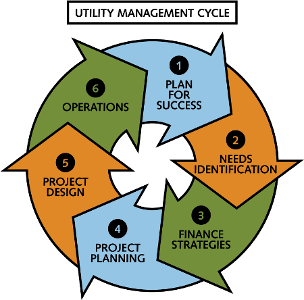The design process should be a collaborative effort where utility operators are working with design professionals and regulators to configure final plans and specifications to meet local needs as well as regulatory requirements. The requirements of the construction contract depend on local agency or Tribe contracting requirements, the public contract code, and specific requirements of the funding agencies.
The toolbox elements summarized in this section provide assistance to small agencies in hiring the professionals needed to help a District throughout the Utility Management Cycle and provides an overview of the process for the public bidding of construction projects.
Toolbox Elements to Complete Final Design and Construction
| Toolbox Element |
Description |
| Guidance for Hiring Professionals |
As a project moves from initial planning towards implementation, detailed, community-specific designs are required and communities will need to retain professional support. |
| Public Bidding Process Overview |
Understanding how the public bidding process works, how to set up a successful project bid, and how the low bid contractor is selected. |
The following sections provide more information about each toolbox element.
Guidance for Hiring Professionals



